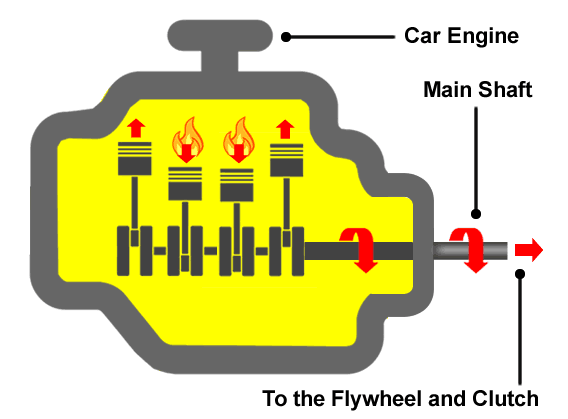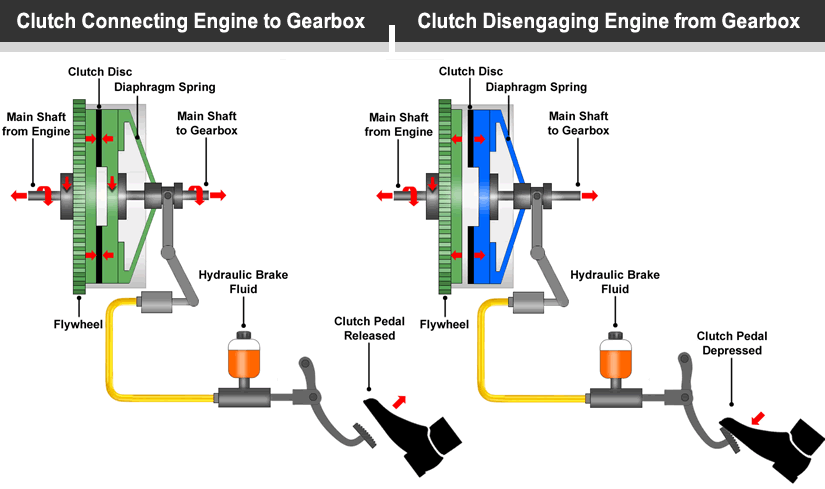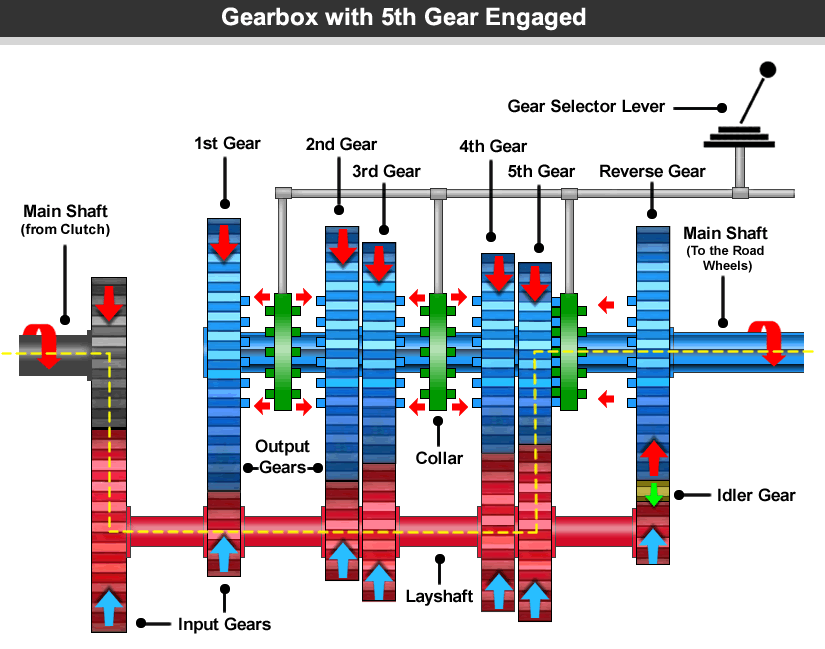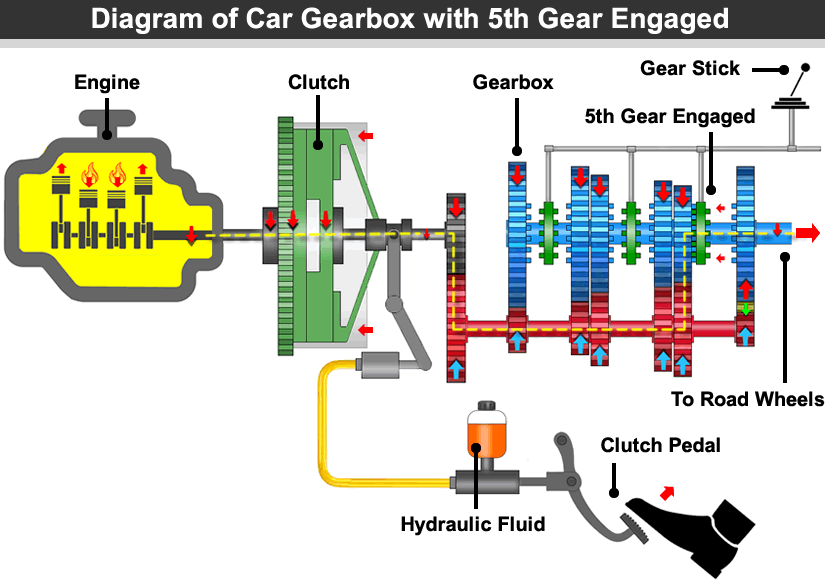How Manual Car Gears Work
Many of us will learn to drive in a car with manual transmission. As driving instructors, we often find that before teaching how to use something, it’s often beneficial to provide a basic understanding of how it works. In this tutorial, we shall provide a basic example of how manual car gears work.
How Manual Car Gears Work
In the main diagram above, we can see how manual car gears work when connected to the clutch and engine. We shall now break these components down to explain in greater detail.
Car Engine
The car’s engine is its source of power. By burning fuel it converts chemical energy into kinetic energy (motion) which turns the main shaft. The main shaft from the engine goes to the flywheel and clutch.

Car Clutch
Connected to the engine’s main shaft is the flywheel. The flywheel is a heavy metal disc that spins with the engine’s main shaft. With the use of rotational energy, the flywheel helps to keep the engine running smoothly. On many vehicles, the flywheel is used to start the engine.

The flywheel is connected to the clutch, which in turn is connected to the gearbox. The gearbox enables us to alter speed and power of the car, but in order to smoothly change gear, the powerflow from the engine to the gearbox must be temporarily discontinued. This break in powerflow is the job of the clutch and is also essential when we stop the car. If the powerflow from the engine is not broken when we stop the car, then engine stalls.
In basic terms, the clutch is made up of two plates, one being a pressure plate that presses against or releases from the other plate. When we press down on the clutch pedal, hydraulic fluid is pressurised and operates components that push against the diaphragm spring. This results in the clutch plates separating, cutting the powerflow from the engine to the gearbox. When the clutch pedal is released, the diaphragm spring retracts and the plates press together restoring the powerflow.
Car Gearbox

From the clutch, we now go to the gearbox. In a gearbox, the input gears and output gears are constantly connected, or ‘in mesh’. The output gears are rotating independently of the main shaft (to the road wheels) and the collar (also called the dog clutch) is secured directly to the main shaft (to the road wheels) and rotates with it.
In the diagram, by following the yellow line from the clutch, we can see that the collar (which is fused to the main shaft) is connected, or meshed with 5th gear.
As the driver changes gear, the gear selector mechanism operates each of the collars to connect with a gear. When the gear stick is in neutral, none of the collars are connected to a gear. The idler gear (cog) in the reverse gear allows for the main shaft to the wheels to rotate in the opposite direction.
